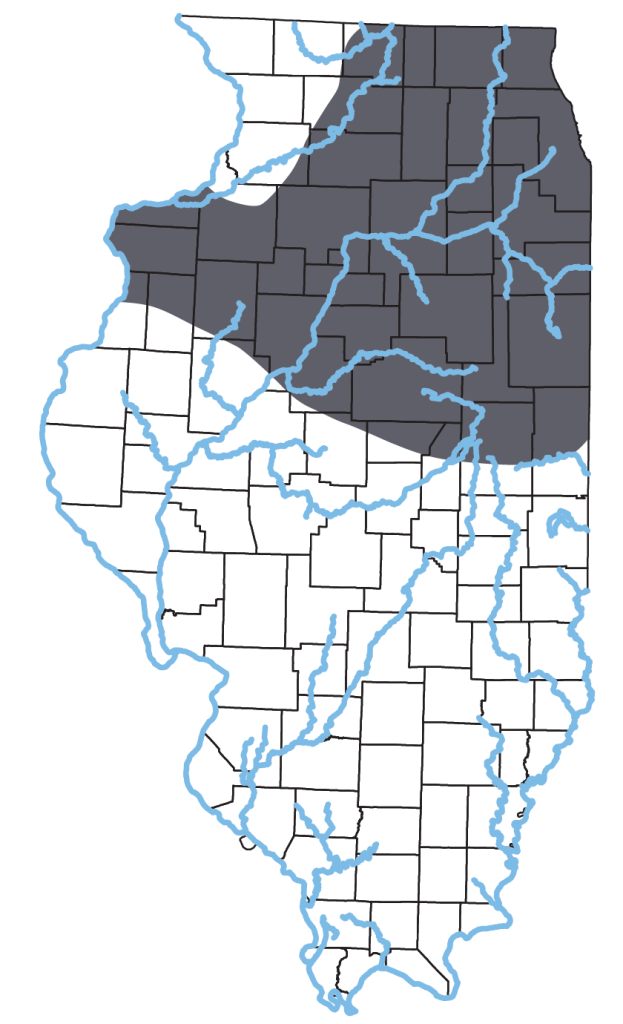Opheodrys vernalis (Harlan, 1827)
Key Characters: Fifteen rows of smooth scales at midbody; divided anal plate.
Similar Species: Rough Greensnake. See the Key to Snakes of Illinois for help with identification.
Subspecies: None recognized.
Description: Slender green snake up to 85 cm TL with off-white belly. Newborn is dark olive-green; slightly older juvenile is gray-green.
Habitat: Moist prairie remnants, savannas, bogs, marshes, wet meadows, old fields, and vacant lots.
Natural History: Less arboreal than rough green snake, only occasionally climbing onto low bush branches. Active during the day April to October when it can be found in grass, in low bushes, and under rocks, boards, and other debris. Does not bite when handled, but sometimes feigns striking and voids feces and musk. Hibernates in ant hills, rodent burrows, and other retreats below ground. Mates in May and lays 5-15 thin-shelled eggs in June. Young 8-15 cm TL hatch in August. In northern populations, female incubates eggs internally for a time by basking, then lays them in a mound of rotting plants or in a sawdust pile, rotting log, or rodent burrow. Food consists of spiders, centipedes, millipedes, slugs, snails, and insects. Main predators are other snakes, birds, and mammals.
Status: Not abundant anywhere in the state. Reduced by habitat destruction and widespread use of insecticides that eliminate populations of food organisms.
Etymology: Opheodrys – ophis (Greek) meaning serpent, reptile; drymos (Greek) meaning forest, wood; vernalis – (Latin) meaning ‘of springtime’.
Original Description: Harlan, R. 1827. Genera of North American Reptilia, and a synopsis of the species. Journal of the Academy of Natural Sciences Philadelphia. 5(2):317-372.
Type Specimen: Holotype. ANSP, now lost.
Type Locality: “Pennsylvania and New Jersey”
Original Name: Coluber vernalis Harlan, 1827
Nomenclatural History: Kennicott (1855) used Chlorosoma vernalis and Davis and Rice (1883) used Cyclophis vernalis to refer to this species. Hurter (1911) used Liopeltis vernalis and Schmidt & Necker (1935) used Eurypholis vernalis. Smith (1961) used the combination Opheodrys vernalis blanchardi Grobman, 1941, but subspecies are no longer recognized in vernalis.


